Whether it's forcing you to modify workouts, preventing you from picking up your kids or grandkids with ease, or making everyday activities like tying your shoes a challenge, low back pain can range from mildly annoying to significantly debilitating. According to the National Institutes of Health, 80 percent of adults experience low back pain at some point in their lifetimes. Of those affected, about 20 percent develop chronic low back pain lasting a year or more. If you're experiencing low back pain, know that there are millions of others out there just like you.
The causes of low back pain range from muscle weakness to injury or disease. If you have been struggling with low back pain, your first step should be a visit to your primary care provider. Once they diagnose the cause of the pain, you can work together to develop a treatment plan.
Back pain tends to be more common in those who are not physically fit. When muscles are weak or tight, injury from doing something as simple as picking up something off the floor becomes more likely to occur. Many times, there's no dramatic story to tell about why you can't get off the couch; often, it's a simple, everyday movement that puts you out of commission.
Although your doctor will be the best resource in identifying the specific issue, there are a few common causes of low back pain that can be addressed through targeted exercises designed to strengthen and stretch those areas. Unless indicated, perform each exercise for one to three sets and eight to 12 repetitions per set.
1. Weak Core
Your core is the set of muscles surrounding the lower back, including the abdominals, obliques, latissimus dorsi and erector spinae. If any of these muscles are weak, the others take on more work to compensate. A strong core, consisting of muscles, tendons and ligaments is like a natural back brace. If the muscles are weak and, therefore, the brace is loose, it will not support the back like it needs, which can result in pain or even injury. To strengthen the core, incorporate these exercises into your strength training routine.
Plank (abs)
Lie on your stomach with palms on the floor under the shoulders, feet and legs together, and toes down. Lift your body up into a pushup position so that your arms are straight and weight is balanced evenly between hands and toes, keeping the body as straight as possible. Hold for 30 seconds, eventually working up to one to three minutes.
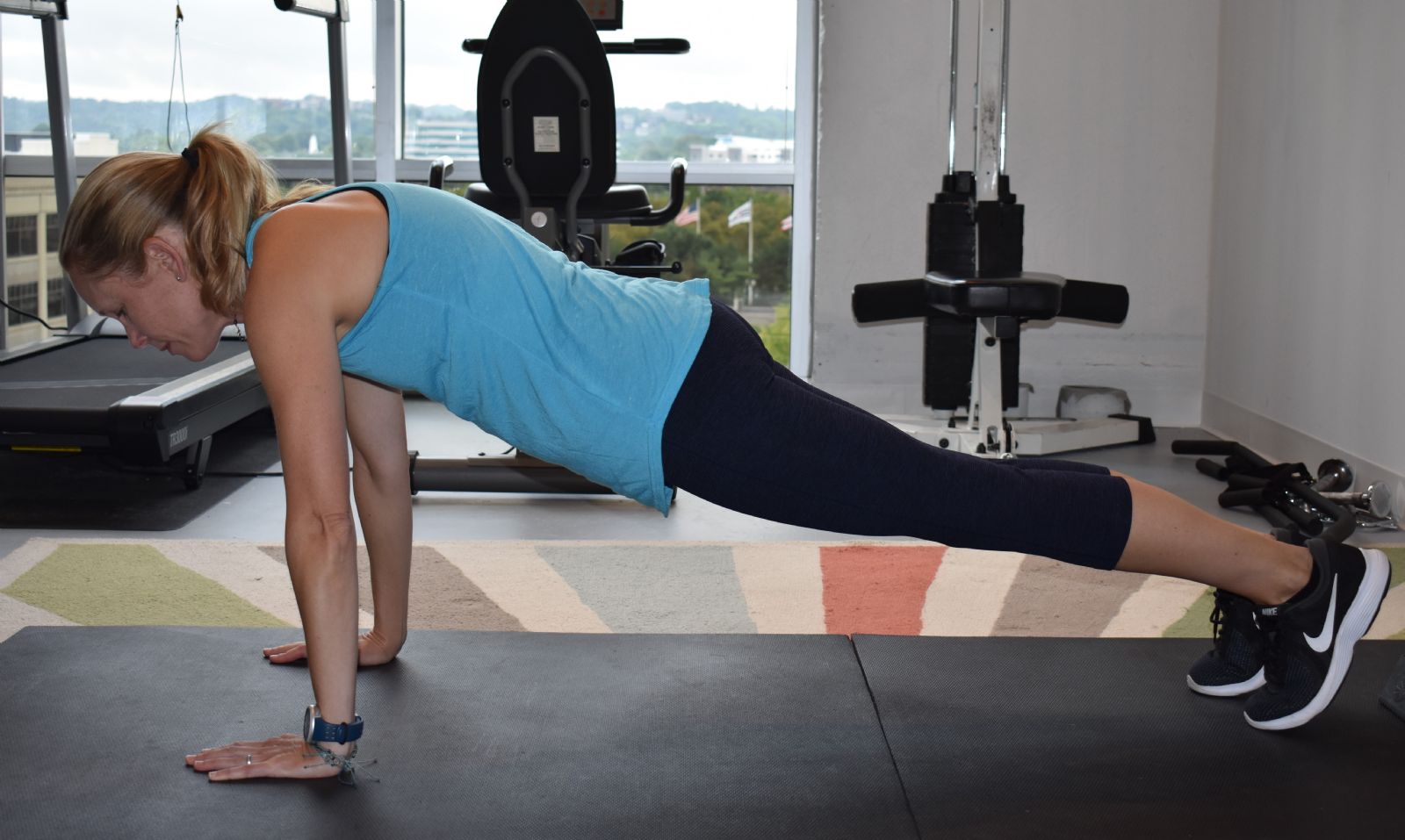
Bird dog (abs, glutes, lower back)
Start on hands and knees with shoulders over wrists and hips over knees. Keep the pelvis tucked under and the back flat. Slowly raise one arm and the opposite leg straight out while keeping the rest of the body as still as possible. Return to the starting position and switch to the opposite side to complete one rep.
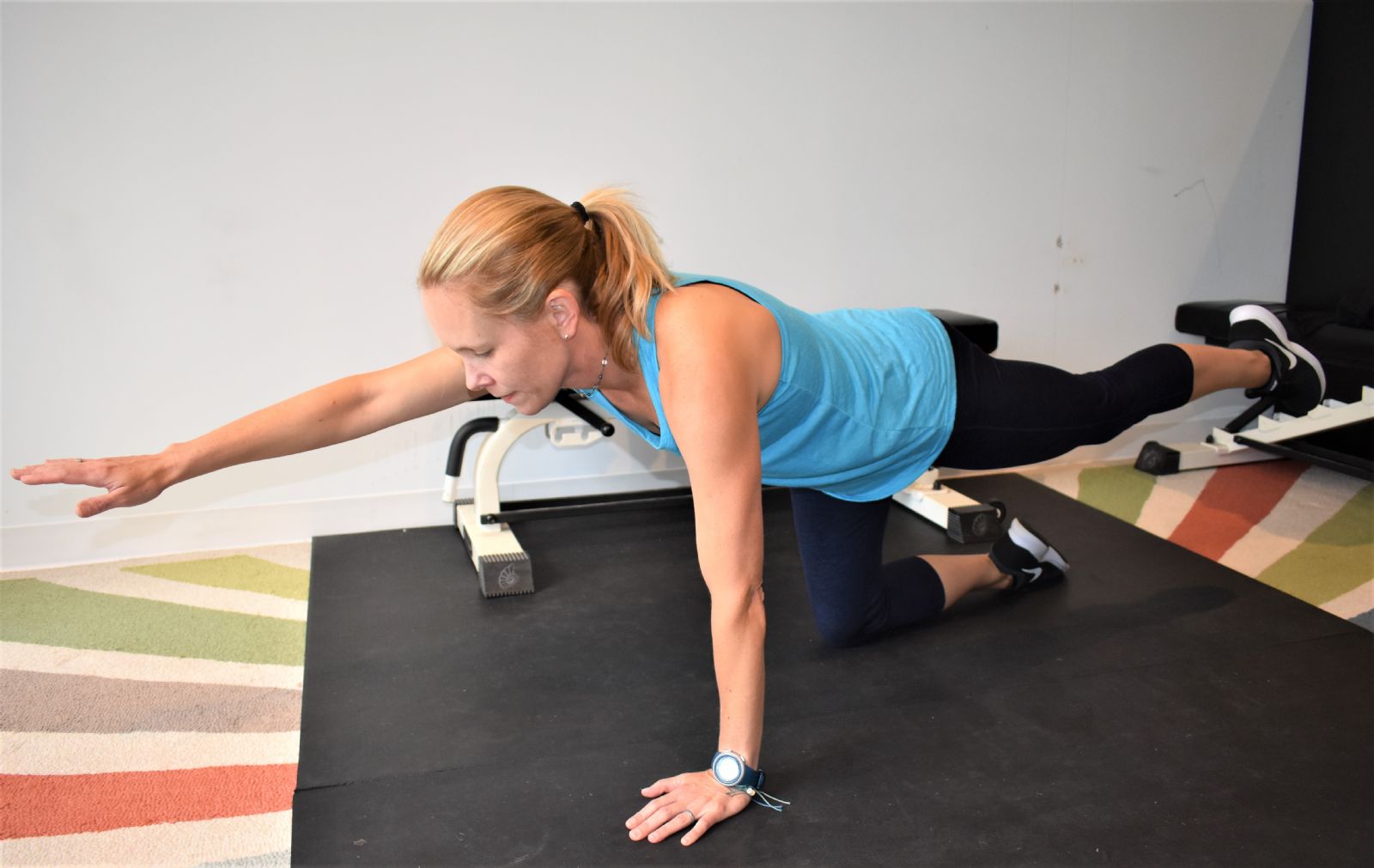
Superman (lower back)
Lie face down on the floor with the legs together and the arms straight and extended above your head. Keeping your head and neck in a neutral position, simultaneously lift your arms and legs toward the ceiling to form a gentle curve with your body. Hold for 30 seconds, then release and repeat one to two more times, if desired.

Clamshell (hips, glutes, thighs)
Lie on your left side, resting your head in your left bicep. Bend your knees to 90 degrees, keeping your hips stacked and feet together. With your feet glued together, lift your right knee up and away from your left knee about six inches, then return to the starting position. Do eight to 12 repetitions on one side, then switch to the other side.
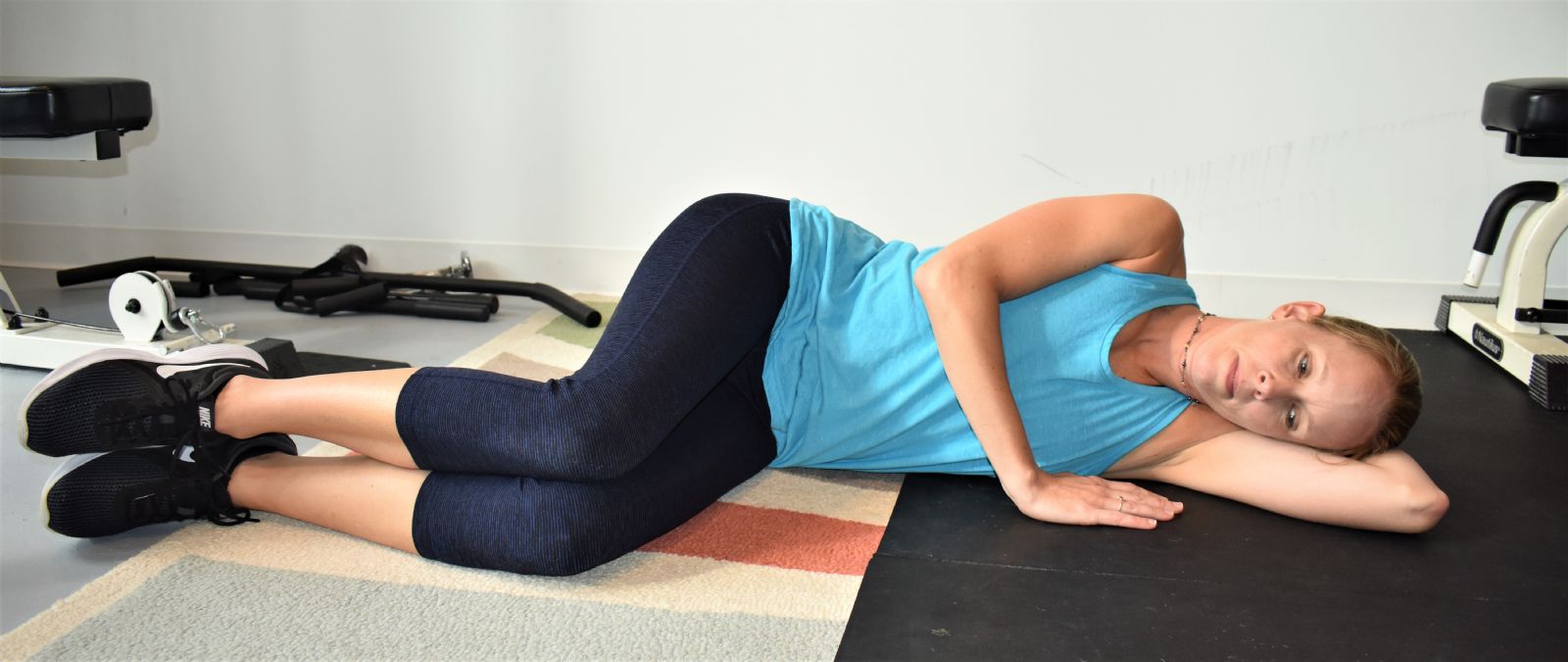

2. Poor Posture
When your body is in proper alignment (head, shoulders, spine, hips, knees and ankles lined up with each other), it puts less pressure on your spine. Over time, poor posture brings your body out of alignment, causing some muscles to work unnaturally harder than others. Joints and muscles become tighter and weaker, which causes stiffness and pain, often in the lower back area. To improve posture, it's important to stretch the tight chest and shoulders, while also strengthening the weak upper and lower back muscles.
Dumbbell rows (upper back, biceps, shoulders)
Stand tall with feet shoulder-width apart and hinge from the hips, keeping the back straight and knees slightly bent. Let the dumbbells hang, palms facing body, with arms extended directly below the shoulders. Squeeze shoulder blades together and bend elbows to about 90 degrees to lift weights away from the floor and elbows toward the ceiling. Slowly return weights to the starting position by straightening arms back down to complete one rep.
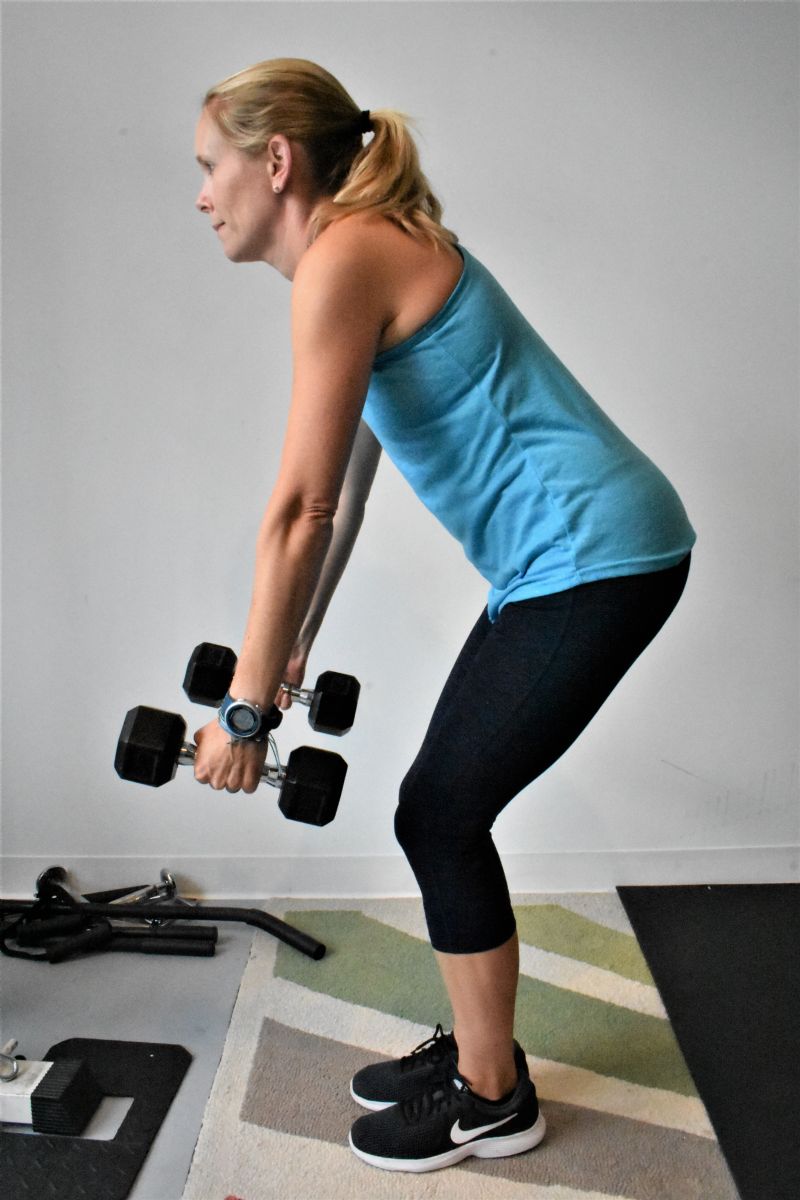
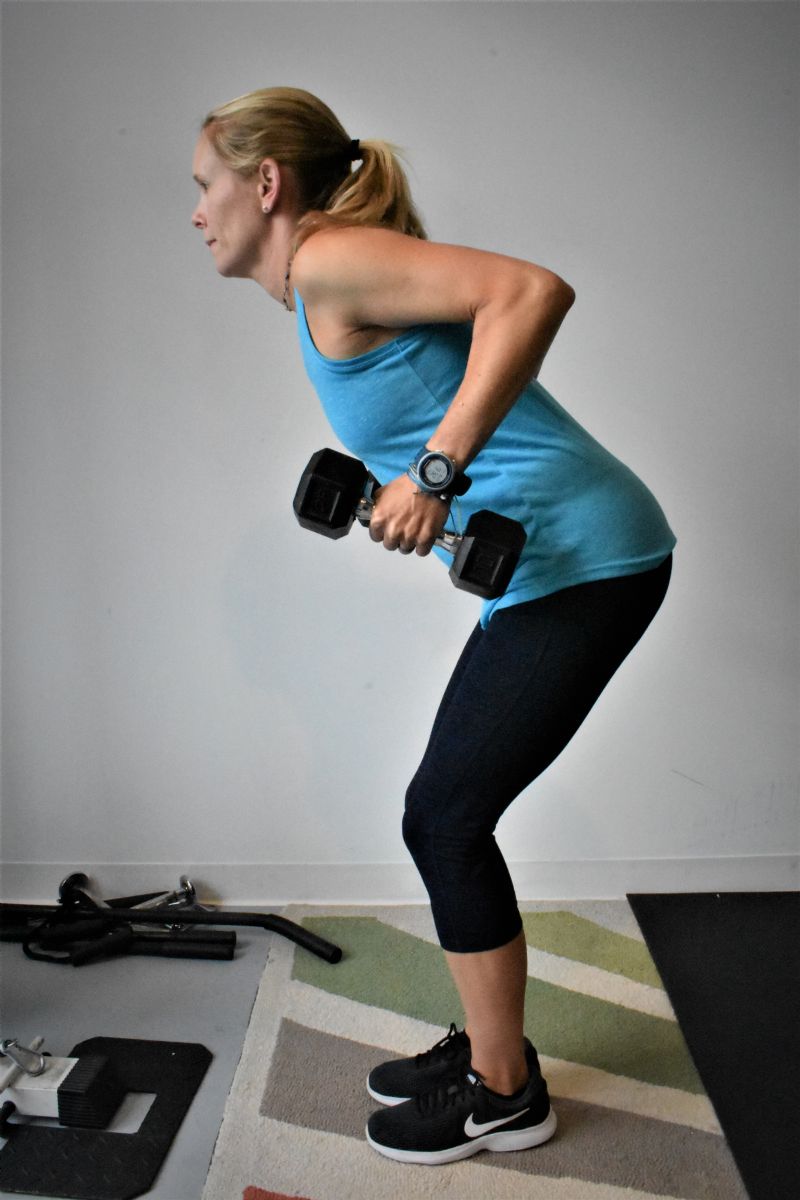
Reverse flyes (shoulders, upper back)
Stand tall with feet shoulder-width apart and hinge from the hips, until your upper body is nearly parallel with the floor. Let the dumbbells hang low, palms facing each other with arms extended directly below the shoulders. Keeping a flat back, raise the dumbbells straight out to your sides until they are parallel with the floor. Slowly return weights to the starting position to complete one rep.
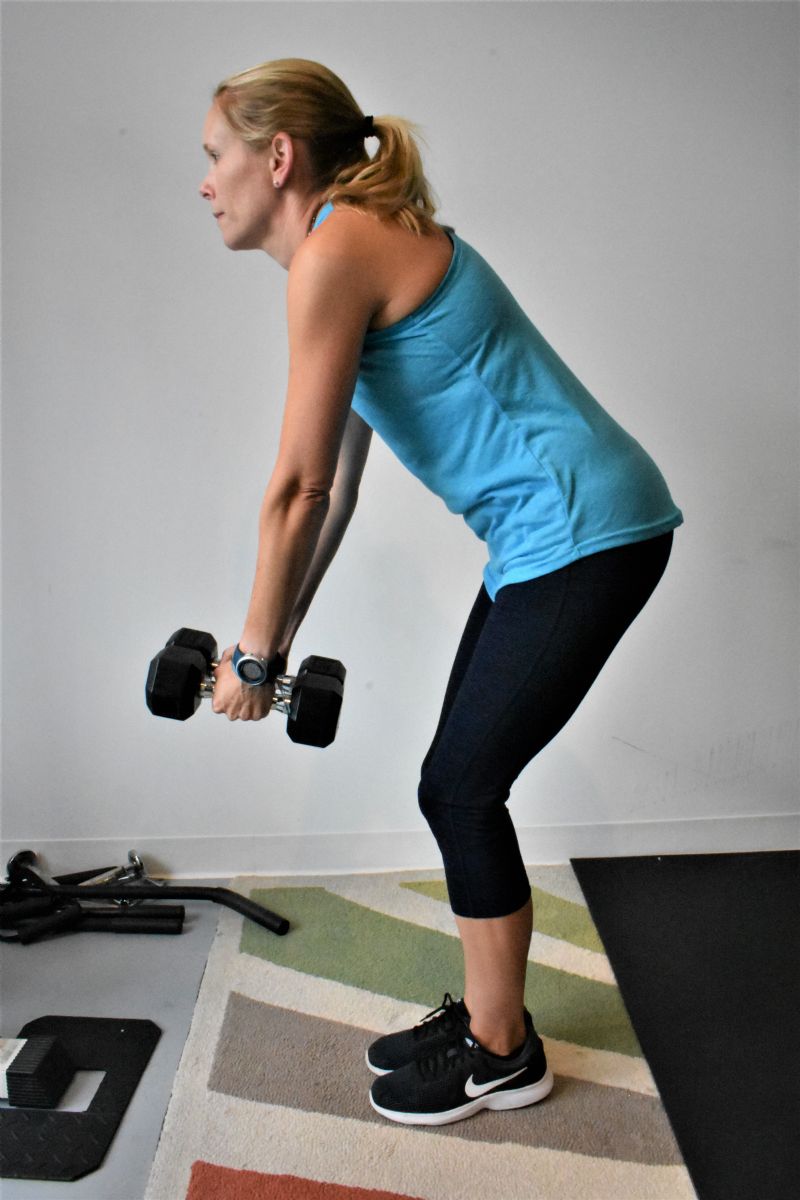
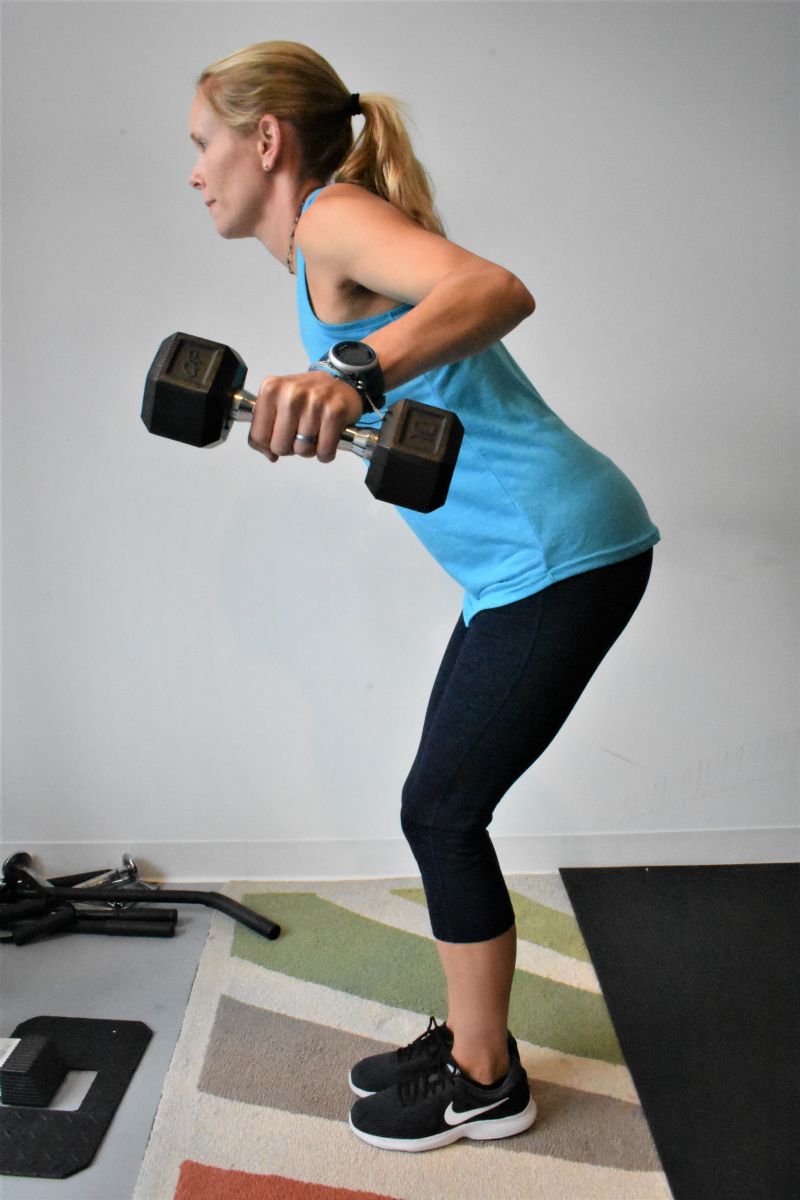
Wall chest stretch (chest)
With the left leg in front and right leg in back, stand in the right side of a doorway. Bring the right arm up to shoulder height and position the palm so that your arm looks like a goal post. Gently press forward to feel the stretch through the chest. Hold for 30 seconds, then release and repeat one to two more times, if desired. Switch to the other side.
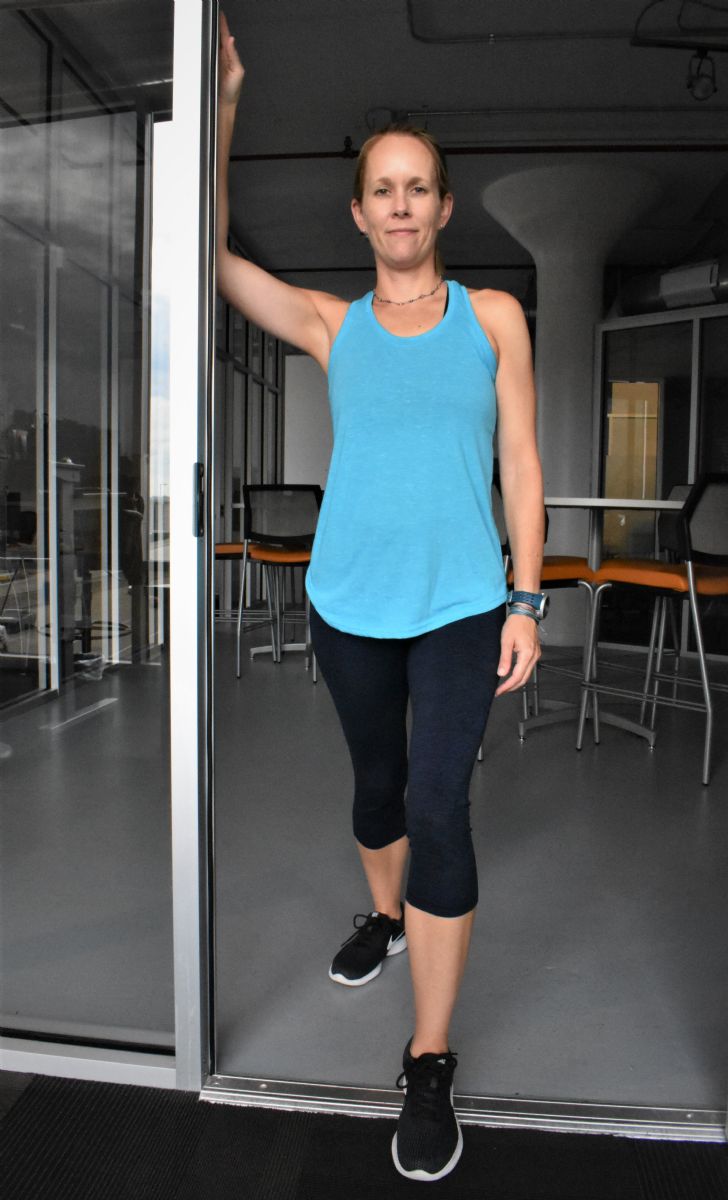
Shoulder rotation (shoulders)
Stand with your back to a wall and bring both elbows out to 90 degrees. Keeping the elbows in the same position, turn the right arm up so the back of the right hand touches the wall. Bring the left arm down so the left palm touches the wall. Slowly switch positions continuously for 30 seconds while keeping the arms at 90 degrees.
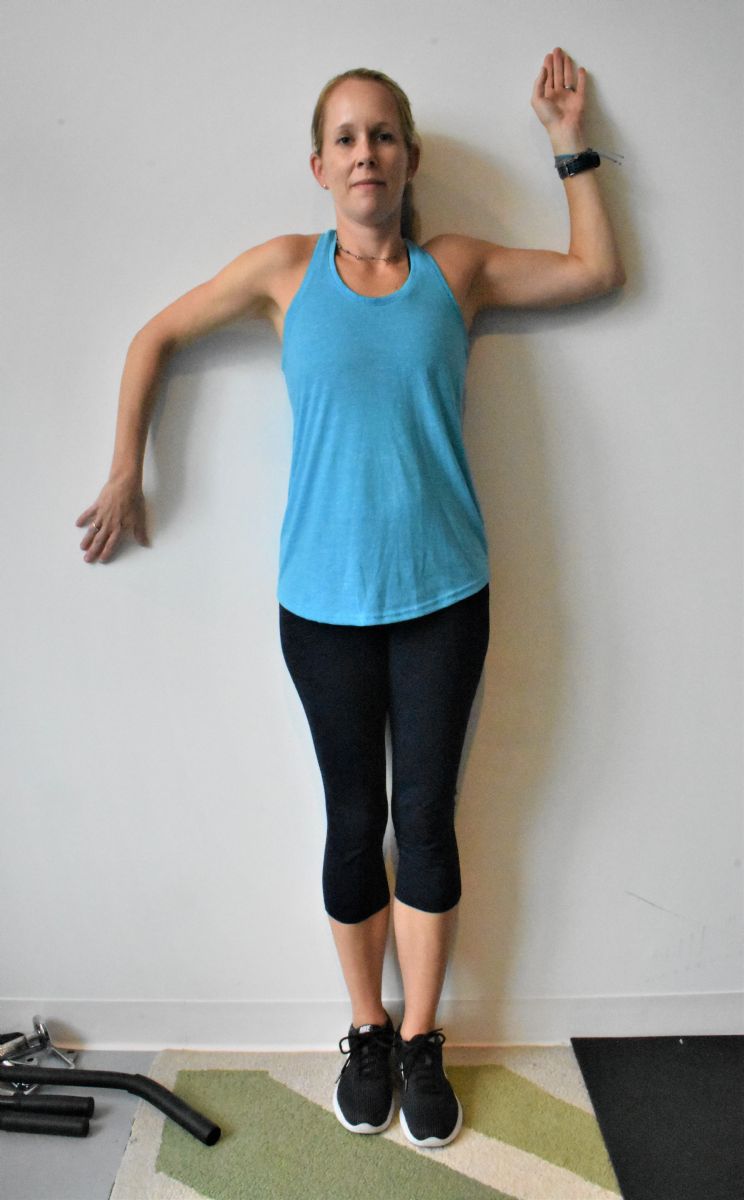
3. Tight Hamstrings
The hamstring muscles run from the hip through the back of the thigh and down to the back of the knee. The constant pull of these tight muscles forces your pelvis to tilt back and your lower back to flex forward, taking your body out of proper alignment and putting more stress on the spine. By decreasing the tension in these muscles, you can decrease the pressure placed on the spine and alleviate pain.
Towel hamstring stretch
Lie on your back with one leg out and the other bent with your foot flat on the floor. Holding both ends of the towel, wrap it around the knee or calf of one leg. Use the towel to pull the leg toward your chest until you feel a stretch in the back of the thigh. Your leg should be straight or slightly bent. Hold for 30 seconds, then release and repeat one to two more times, if desired. Switch to the other leg.
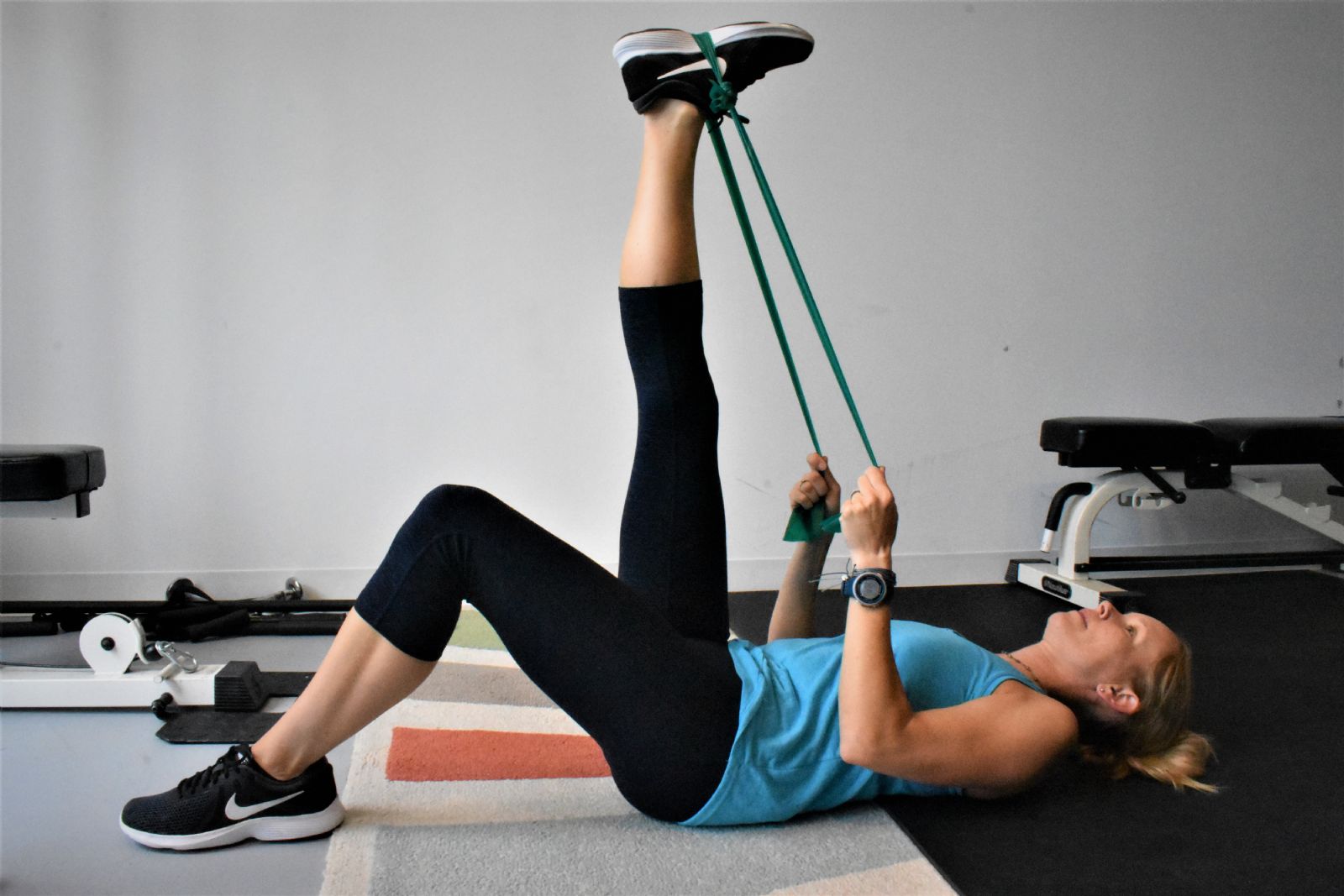
Chair hamstring stretch
Sit on the edge of a sturdy chair with one foot flat on the floor and the other leg extended with toes pointing toward the ceiling. With a flat back and neutral neck, hinge forward from the hips until you feel a stretch in the back of the extended leg. Hold for 30 seconds, then release and repeat one to two more times, if desired. Switch to the other leg.
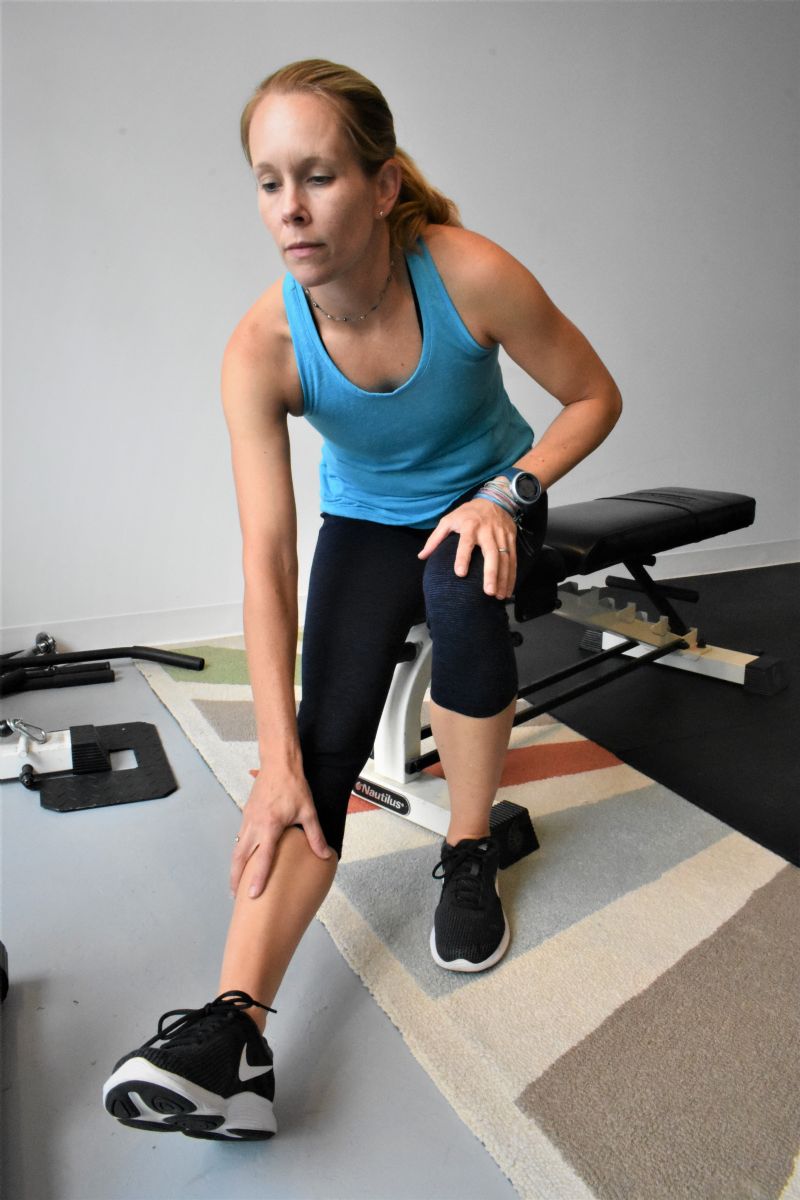
Starting today, think of your body as one giant machine: If specific parts aren't working well, the machine can't function optimally. A muscular imbalance in one area can result in pain or issues in a completely different area of the body. Although there are a wide variety of reasons you could be having back pain, these are a few that can be addressed through a balanced strength and stretching program. As always, it's best to talk to your doctor first rather than self-diagnosing this common, but often complex medical issue.









